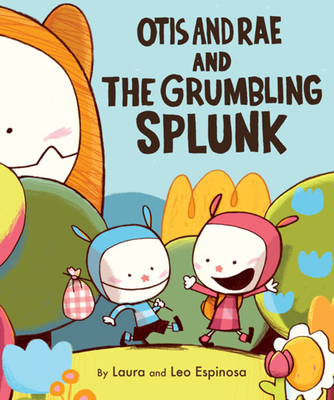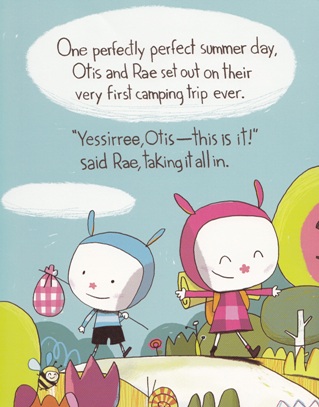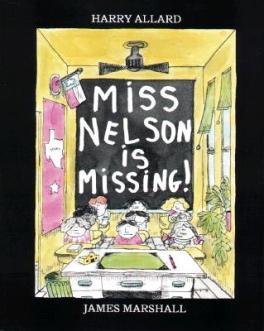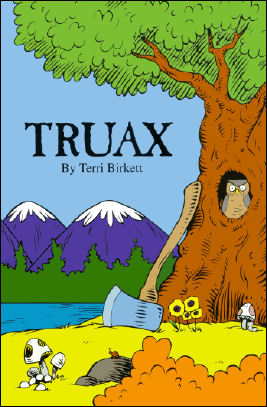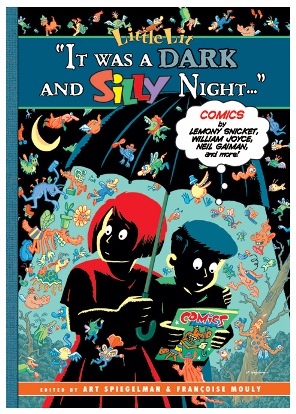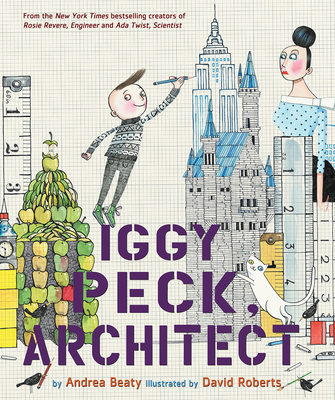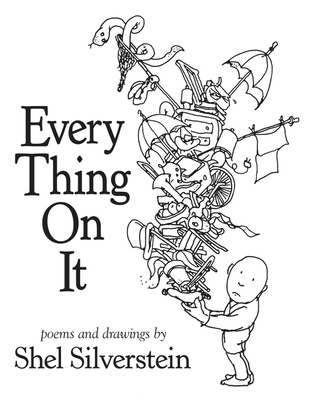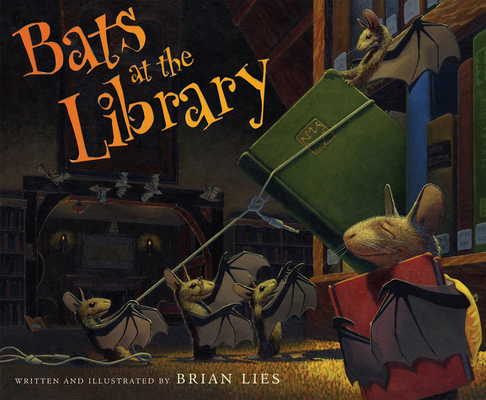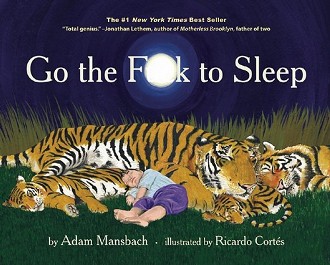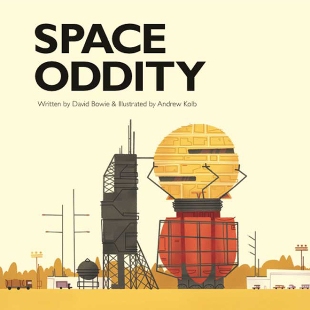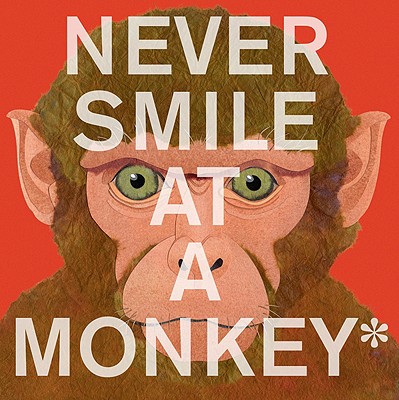Otis and Rae is a book that I always enjoy recommending to other parents for two reasons – 1). It’s a fun read, and 2). it’s a relatively unknown title. I don’t know anyone else in my immediate circle who has it or has even heard of it, our whole county library system only has 4 copies of it, and even the “Customers Who Bought This Item Also Bought” suggestions on its Amazon page only has four other suggestions total (as opposed to the 17 pages of suggestions for other titles). So, yes, it gives me that heady hipster-esque rush that comes with saying “well, you probably haven’t heard of it”, which is a really repugnant, self-satisfied emotion to indulge in. But don’t take my horrific moral failings out on Otis and Rae. It’s a very cool picture book with some really interesting things going for it.
Published in 2008 by Houghton Mifflin, Otis and Rae and the Grumbling Splunk by Laura and Leo Espinosa is all about two best friends who set out on their “very first camping trip ever”, tramping out into the forest for a fun night of telling ghost stories and eating PB&B sandwiches. (Otis is a big fan of peanut butter and banana sandwiches.) Around the campfire, the ever-cheerful Rae tells stories of the mysterious Grumbling Splunk – a huge creature that grumbles like a freight train – who, apparently, haunts the nearby woods. The tales of the Splunk freak Otis out and, after he accidentally runs into the Splunk at night, Rae happily runs off in pursuit of the creature and Otis, in turn, runs off after Rae. The two friends eventually find the Splunk and realize that his size and tendency to grumble might have given them the wrong impression.
I discovered Otis and Rae and the Grumbling Splunk at a new and used book sale at my office, and I immediately dug its design and format. The world of Otis and Rae evokes a design aesthetic that fans of Sanrio (i.e. Hello Kitty) or the cuter creatures of Hayao Miyazaki (think My Neighbor Totoro) should really enjoy, but the characters aren’t totally Japanese inspired. They just tap into that ultra-cute, big-head design school that Japanese pop culture does so well. Illustrator Leo Espinosa has found a way to really evoke that “cute balanced with hand-drawn personality” style that you can really see on display in Sanrio, Uglydolls, Nick Jr’s Wow! Wow! Wubbzy!, or the stuffed animals at your local IKEA. If that aesthetic appeals to your child, they will really respond to this book.
The other thing that I really like about Otis and Rae is that it is a terrific hybrid of a picture book and a comic book. About 60% of the book is structured like a traditional picture book – illustrations with text above or underneath – and the rest uses the panel design, sound effects, and word balloon structure of a comic book. The format is really dynamic and engaging, and the simple, easy-to-read text makes this an excellent transitional title to help young readers get used to the comic format.
My daughter is getting more and more interested in comic books and, to be honest, with many comics, the format is too cluttered and the word balloon text is just too small for a learning reader to follow without getting easily confused. (As a parent, even though I LOVE comics, I’ll admit that trying to read those kinds of comics to your kid can be a real pain in the butt.) However, I think Otis and Rae introduces kids to the rules and structure of a comic book in a very gradual, clever way, showing off a design style that elegantly bridges the gap between picture books and comic books. [read the rest of the post…]
{ 0 comments }
